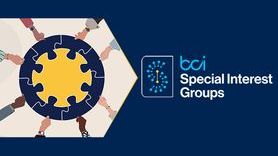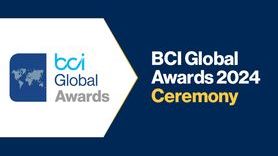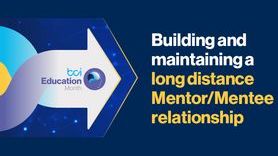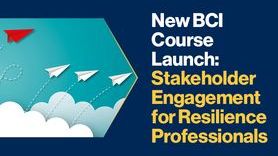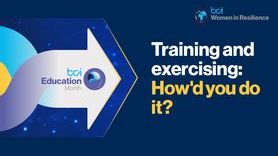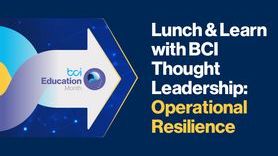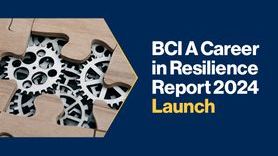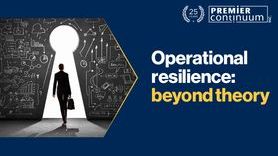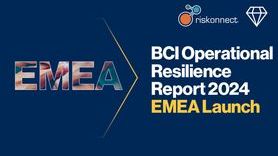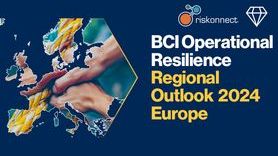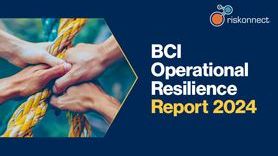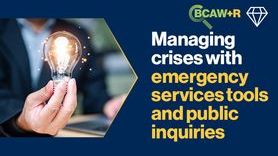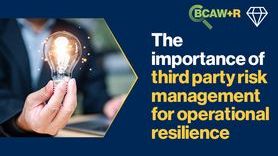Operation Resilience: Why Public Debt Management Offices Need Business Continuity And Disaster Recovery Plans
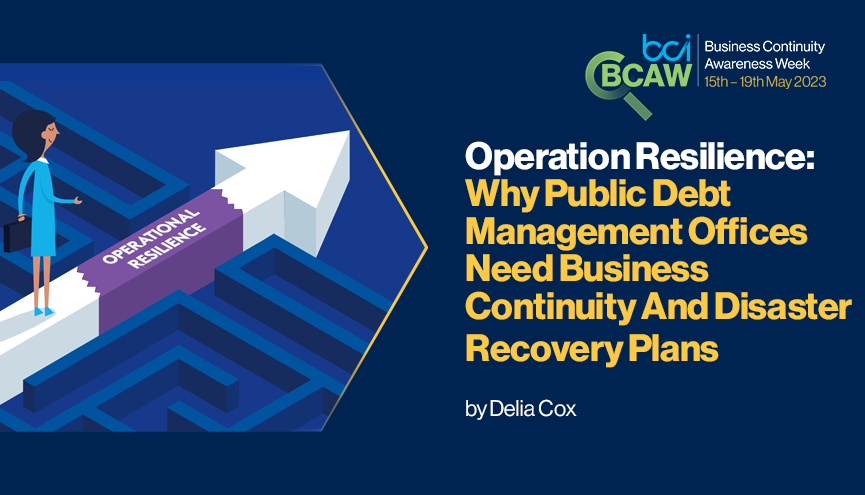
Public debt management offices (DMOs) are responsible for raising financing, debt servicing, and managing the costs and risks of the government’s public debt portfolio — typically the largest and, arguably, the most important financial portfolio in a country. An International Monetary Fund (IMF) staff blog estimated that, at approximately 40% of total global debt, public debt has accounted for the largest proportion of global debt since the mid-1960s. The resulting economic crises, including the global financial crisis and the COVID-19 pandemic, were the main drivers of public debt since 2007[1] (Gaspar, et al, 2021). In terms of national output, the weighted average of global public debt to Gross Domestic Product (GDP) was estimated at 96% in 2021, dominated by advanced economies, followed by emerging markets and developing countries[2]. At the peak of the COVID-19 pandemic, all the income groups had registered substantial increases in public debt both in nominal terms and as a proportion of GDP, as governments borrowed heavily to manage the crisis.
Given the importance of the size and impact of public debt on a country’s macroeconomic outcomes and sovereign credit rating, it is critical that DMOs put in place business continuity (BC) and disaster recovery (DR) plans as part of a broader operational resilience framework. This is to ensure that debt management operations continue and remain resilient in the face of disasters (natural or otherwise) or other business disruptions.
The IMF’s revised guidelines for public debt management define public debt management as: “Establishing and executing a strategy for managing the government’s debt in order to raise the required amount of funding at the lowest possible cost over the medium to long run, consistent with a prudent degree of risk. It should also meet any other public debt management goals the government may have set, such as developing and maintaining an efficient market for government securities,” (IMF, et al, 2014).
Quite often, the DMO has been tasked to reduce cost and manage financial risks impacting the public debt portfolio, such as credit risk, refinancing risk, liquidity risk, and market risks such as exchange rate risk and interest rate risk[3] (IMF, 2014). Therefore, the emphasis remains on managing cost and financial risks.
However, the operational risk from external or internal events, defined as the risk of loss resulting from inadequate or failed processes, people, and systems had not been at the forefront of the agenda for many DMOs prior to the COVID-19 pandemic. In fact, an analysis conducted by the World Bank on the results of the Debt Management Performance Assessment (DeMPA), conducted in 65 countries across all regions, identified BC and disaster recovery plans as one of the core debt management areas that require significant improvement, amongst others such as staff capacity development, administration, and data security.
What is Business Continuity and Disaster Recovery in this Context?
BC and disaster recovery are in no way isolated, but there are differences between the two. According to the DeMPA: “Business continuity planning allows an organization to be prepared for anything that could jeopardise its performance, its ability to meet business objectives, or its long-term health. Risks can be local, e.g., building fires, regional, such as earthquakes, or national, like pandemics,” (World Bank, 2021).
Meanwhile, according to the DeMPA: “Disaster recovery is the process of regaining access to data, hardware, and software. It is also the ability to resume critical business operations after a natural or human-induced disaster with the minimum number of staff. A disaster recovery plan (DRP) should also include plans for coping with the unexpected loss of key personnel. A DRP is part of the BC planning process,” (World Bank, 2021).
Best Practices for BC and Disaster Recovery Planning for Public Debt Management
A survey of the current literature reveals that there are several documents, guidelines, reports, and assessments that define best practices for BC and disaster recovery both in general and specifically for DMOs. For example, the guidance from the Bank for International Settlements (BIS) Basel Committee on Banking Supervision and the Committee of Sponsoring Organizations (COSO)[4] provide some of the general requirements. For debt management specific guidance, DMOs can explore the World Bank’s Revised DeMPA Methodology[5], as well as the Guidance for Operational Risk Management in Government Debt Management[6] and the IMF’s Guidelines for Public Debt Management[7] and the Technical Guidance Note on Business Continuity Planning for Government Cash and Debt Management[8].
Principle 7 of the Guidance for Operational Risk Management in Government Debt Management maintains that: “The DMO should have in place contingency and BC plans to ensure its ability to operate on an ongoing basis and limit losses in the event of any business disruption.”
Debt Performance Indicator (DPI) 13 of the World Bank’s Revised DeMPA Methodology 2021 focuses on data security and BC, with DPI 13.2 identifying the minimum requirements for various scores for DMO performance as it relates to BC and disaster recovery. Based on the methodology, “to meet the minimum requirements (C score), the DMO must have written BC and DR plans,” which “must have been tested within the past 2 years.” Meanwhile, for a B score, the requirement is that “there is an operational recovery mechanism which is tested annually.” For the highest level, “the DMO must provide evidence that there are documented guidelines for operational risk management,” (World Bank, 2021).
Some Threats to BC in the DMOs of the Commonwealth
The Commonwealth is a voluntary association of 56 independent and equal member countries. It is home to 2.5 billion people and includes both advanced economies and developing countries, where 32 of the member countries are small states, including many island nations[9] (The Commonwealth, n.d.). Given the location of member states in vulnerable geographical regions, there are a number of threats to BC in the Commonwealth DMOs.
Climate-related events continue to impact DMO operations in every region of the Commonwealth. From hurricanes in the Caribbean and the Americas, flooding and droughts in Africa, to tsunamis in Asia and the Pacific, and snowstorms in Europe, these natural hazards can cause significant business disruptions due to staff absenteeism, impeded access to work sites, and damage and destruction to physical office buildings.
Pandemics and health hazards are another severe threat. The COVID-19 pandemic caused unprecedented disruption and posed a significant risk to BC in many DMOs with the ensuing lockdowns, staff working in all stages of the borrowing cycle in the DMO, central banks, treasuries, creditors, and intermediaries could not initially carry out some transactions and were forced to transition to various remote working modalities. The period of transition required rethinking processes, internal controls, approvals, and how technology and systems were utilised to continue implementing debt management activities effectively.
Cyber security risks were also brought to the forefront as a major risk to BC as many DMOs increased reliance on technology to conduct debt management activities. Despite the benefits of remote work environments, this elevates the potential of risks including that of a GDPR or data breach as well as the risk of cyber-attacks, including malware, social engineering (phishing), password attacks, and insider attacks.
There are many other natural, accidental, and deliberate hazards that can disrupt the activities of the DMO including earthquakes, thunderstorms, tornados, fires, errors, power failures, arson, terrorism, strikes, riots, and theft.
What is clear is that all of these risks can have some impact on business operations, which can protract the DMO’s ability to carry out its core objectives. This includes restricting the DMO fundraising capabilities, including securing the lowest possible costs and increasing the possibility of default on existing debt due to non-compliance with borrowing terms. For example, some countries contracted domestic debt at higher costs and non-market terms such as overdraft facilities due to the inability to conduct auctions or auction failures. In addition, failure to service public debt on time due to pandemic-induced disruptions can be viewed as a sovereign debt default by credit rating agencies and can result in a credit rating downgrade. The implications of this include increased cost of borrowing due to increased risk perceptions, as creditors price this additional risk into interest rates. This can also lead to increased refinancing and liquidity risks due to a loss of, or reduced, market access to raise financing for implementing several aspects of a country’s sustainable development agenda such as health, education, youth, and climate adaptation and mitigation. Public debt transparency can also be compromised if reports are not produced accurately and on time, resulting in significant reputational and political risks.
Some Key Considerations
A number of key matters should be considered by the DMOs in order to strengthen operational risk management, including BC and DR.
Firstly, support from senior officials for this activity must be part of establishing a risk management culture in the DMO and, by extension, the Ministry of Finance. Securing support from the highest levels will increase the likelihood of approval of the BC/DRP. Effective governance of the BC/DRP requires buy-in at all levels. This includes regular review and approval by senior officials in the Ministry of Finance, robust involvement of operational managers in the implementation of the plan, and commitment from internal auditors to regularly review the plan. As such, creating a tone from the top is crucial to the success of the BC/DRP because it ensures that debt management staff are accountable and that appropriate systems are in place to respond to exogenous shocks.
Secondly, BC and DR planning should be prioritised by the DMO. Including them both as a key work programme item will help the DMO identify the required human capital, resources, and time required to implement the BC/DRP.
Thirdly, all stakeholders, including third-party (to the Ministry of Finance) service providers should be included in the consultation process. This includes major service providers who are material to the successful execution of processes at various stages of the borrowing cycle. For example, treasury, brokers, central banks, and debt management systems providers.
The Need for Capacity Building and Technical Assistance for the BC/DRP
Finally, capacity building and technical assistance in the area of BC/DRP is critical. Many DMOs, particularly small DMOs in developing countries, require strengthening of skills and training in the development and implementation of BC and DR planning. Further, the size of the DMO only allows for focus on one reform at a time in addition to day-to-day activities. This, however, does not negate the fact that if operational risks are not managed properly, the implications are significant and can include increased financial risk, which can translate to increased costs charged to the public purse in lieu of key development priorities. While the current suite of public goods, including assessment tools and methodologies, on offer by development partners, are crucial to the identification and needs assessment process, the DMO’s need goes beyond identifying reforms or even the development of reform plans. In some cases, DMOs require hands-on assistance from development partners with the actual implementation of these reforms. It is therefore critical that the international community should consider including BC and DR planning as key items in capacity building and technical assistance programmes for DMOs.
How Debt Management Systems Can Support Business Continuity and Disaster Recovery Planning
Debt management information systems (DMIS) are critical for the effective management of public debt within the context of budget preparation, supporting debt-related payments and cashflows, as well as the recording, monitoring, analysing, and reporting of public debt and debt-related transactions, as part of good practices to support public debt transparency and accountability. DMIS can help overcome risks related to maintaining manual records of public debt. It is difficult and cumbersome to provide alternatives for secondary storage of manual debt records to protect against disasters, including fire, flooding, and theft. In addition, users of physical debt records need to be physically present in the office to access them, making initiatives like remote working difficult during times of crisis. Implementing appropriate DMIS can significantly reduce these risks, making them more effective in supporting BC/DRP than previous systems.
Recognising the importance of DMIS for effective debt management and BC/DRP, the World Bank’s 2021 Revised DeMPA Methodology added a new DPI specifically focusing on DMIS. According to the DeMPA, “there are five core aspects in a DMIS:
- data inputs (record all transactions and exogenous data)
- storage processing
- generation of outputs (calculate cost-risk indicators and produce reports)
- ability to export/import data
- technology/interface with users,”[10] (World Bank, 2021).
The practical focus of the DeMPA is on DMIS useability and whether these functionalities can be demonstrated using a set of modules, or facilitated through systems integration, rather than evaluating DMIS capabilities and software structure.
Countries can utilise DMIS to ensure that staff can securely access the system remotely to perform these debt management activities, even when circumstances such as pandemics and natural disasters hinder access to physical offices and workstations. During these disruptions, DMOs are still required to service debt, perform day-to-day tasks, meet increased demands for information, and provide advice to senior management. With the right functionalities, web-based DMIS can help DMOs deliver on these priorities with calm and ease. For example, a DMIS with a well-designed IT architecture that can facilitate both integration or interface with other external platforms or software, such as clearing systems and integrated financial management information systems (IFMIS), will allow the DMO to execute payments and manage finances, budgets, and government securities seamlessly and securely.
The Commonwealth Secretariat and Business Continuity and Disaster Recovery Planning
The Commonwealth Secretariat has implemented a number of initiatives to support countries and their DMOs to enhance BC and DR planning while, at the same time, promoting debt transparency. The Secretariat’s Debt Management Unit (DMU), through its public debt management programme, has supported member countries’ efforts to effectively manage their debt portfolios for the last 40 years. In accordance with the mission of the Commonwealth Secretariat and Sustainable Development Goals, the programme aims to strengthen the policy framework, institutional and legal arrangements, institutional capacity, and management information systems to support prudent and effective debt management in member countries. This supports the overall aim of individual member countries to achieve sustainable debt, reduce long-term debt servicing costs, and manage the risk of contingent liabilities as well as risks of debt distress. Delivery of the programme is through advisory support, capacity building, and provision and support of public debt management systems (Commonwealth, n.d.).
Through the technical assistance and capacity-building arm of the programme, the Commonwealth supports the development and implementation of BC/DRPs in various member countries. Another key component of the debt management programme is the provision of the Commonwealth Secretariat Debt Management Solutions, which consists of a suite of software products that are primarily used by governments to manage their sovereign debt (both external and domestic) portfolio. This includes the new public debt management system, Commonwealth Meridian, that incorporates advanced and improved functionalities to address emerging debt management requirements and takes advantage of the latest state-of-the-art technologies (Commonwealth, n.d.). Overall, when utilised comprehensively, the system functionalities can support BC, DR, and debt transparency and can help countries satisfy the best practice requirements for public debt management, including those outlined in DeMPA DPIs.
In conclusion, BC and DR planning can help enhance a DMOs capacity to limit operational risks and continue its operations following major incidents and disruptions. However, given the size and capacity of DMOs, efforts towards implementing BC/DRPs that meet best practices are often significantly protracted. It is therefore important for development partners and technical assistance (TA) providers to make targeted investments in TA and capacity-building initiatives to support country efforts in this area. To support this, countries should commit to implementing these reforms including the adoption of DMIS, with the aim of strengthening debt management functions and improving the resilience of the DMO.
____________________
The staff of the Debt Management Unit at the Commonwealth Secretariat under the leadership of Mr. Mac Banda provided valuable feedback on this blog.
About the Author
Delia Cox is a Public Debt Management Adviser at The Commonwealth Secretariat. Her broad areas of expertise include delivering an integrated package of technical assistance and capacity-building programmes to help the 56 Commonwealth countries effectively manage their debt portfolios by strengthening their public debt management frameworks to promote debt sustainability. She has held highly technical roles in several international organizations including the Commonwealth Secretariat in the UK, the United Nations’ International Fund for Agricultural Development in Italy, and the Canada-Eastern Caribbean Debt Management Advisory Service Project of the Eastern Caribbean Central Bank in Saint Kitts and Nevis.
Get involved in BCAW 2023 - follow the link:
[2] 2022 IMF Global Debt Monitor: https://www.imf.org/-/media/Files/Conferences/2022/12/2022-12-12-global-debt-monitor.ashx
[4] The Basel Committee has issued several guiding principles for both operational resilience and operational risk: https://www.bis.org/press/p210331a.htm
[5] https://www.worldbank.org/en/programs/debt-toolkit/dempa
[6]https://documents.worldbank.org/en/publication/documents-reports/documentdetail/419301468153852761
[7] https://www.imf.org/external/pubs/ft/pdm/eng/guide/pdf/part1.pdf
[8] https://www.imf.org/-/media/Files/Publications/TNM/2021/English/TNMEA2021010.ashx
[10] Revised Debt Management Performance Assessment Methodology 2021


